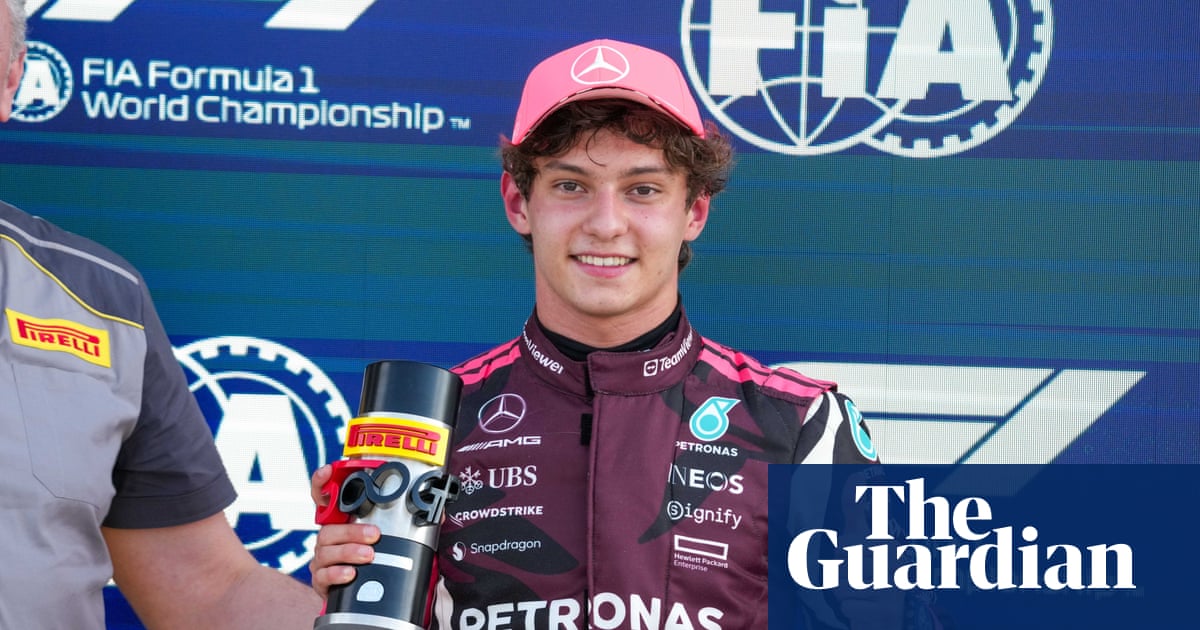Kimi Antonelli sprung the surprise of the season so farby taking pole positionfor Saturday’s sprint race at the Miami Grand Prix, the youngest F1 driver to do so.
The Italian teenager, just six rounds into his rookie campaign as a replacement for Lewis Hamilton, was born five years after the double world champion Fernando Alonso became the youngest F1 driver to take a pole position.
At 18 years and 250 days, Antonelli bettered Sebastian Vettel’s previous record of the youngest pole-sitter in F1, which the latter did as a 21-year-old, and is the third youngest F1 driver ever, behind Max Verstappen and Lance Stroll.
“I did not see that coming,” said Antonelli. “I felt the lap was good and I was happy with it. There were still a few bits I could have done better but I was super happy with how I put all the sectors together. Every weekend I learn massively. Last week, having a break really helped me to gather information and process it all and recharging the batteries, it was really good.
“The whole qualifying I felt I was able to make a step lap by lap. I’m much more aware of how to do a consistent warmup and extract more out of the tyres but there’s a lot to improve. Every weekend I get more confident with the car, can play with it more and explore the limits. At the same time, I can understand more from the setup and give much better feedback which allows the team to improve the car.”
Antonelli has quietly impressed since filling Hamilton’s seat at Mercedes, his rise rapid. The son of the sportscar racer Marco, Mercedes spotted the youngster in Bologna after he made a huge impact in karting, signing him up for their drivers academy at 11.
He made his racing debut at just 15 years old after claiming a host of titles, and that earned Antonelli a drive in F2 for Prema Racing, where his talents blossomed as Oliver Bearman’s teammate. A sprint victory in the rain at Silverstone and a maiden win at the Hungaroring impressed the F1 paddock, but the real head turner came with his performance at Spa-Francorchamps and a bold overtaking move at the notorious Eau Rouge.
When Hamilton floored the sport with the news that he would be leaving Mercedes for Ferrari in 2025, the young Italian’s name began to be connected with the vacant seat alongside George Russell. Mercedes acted swiftly and, shortly after Antonelli’s 18th birthday, announced at the Italian Grand Prix an Italian would indeed replace Hamilton, although the driver’s bubble was punctured somewhat by aheavy crash on his practice debutat Monza.
Antonelli stands sixth in the drivers’ championship, 35 points behind teammate Russell. He made an immediate impression in the season-opener in Australia by being the only rookie not to crash in wet conditions. The paddock certainly took note of his stellar surge through the field from 16th to fourth. More points have been claimed in China, Saudi Arabia and Japan, where he became the youngest driver to lead a race and set the fastest lap.
His rapid rise certainly gives an F1-mad nation something to cheer about. The last Italian to win a race was Giancarlo Fisichella at the 2006 Malaysian Grand Prix.
